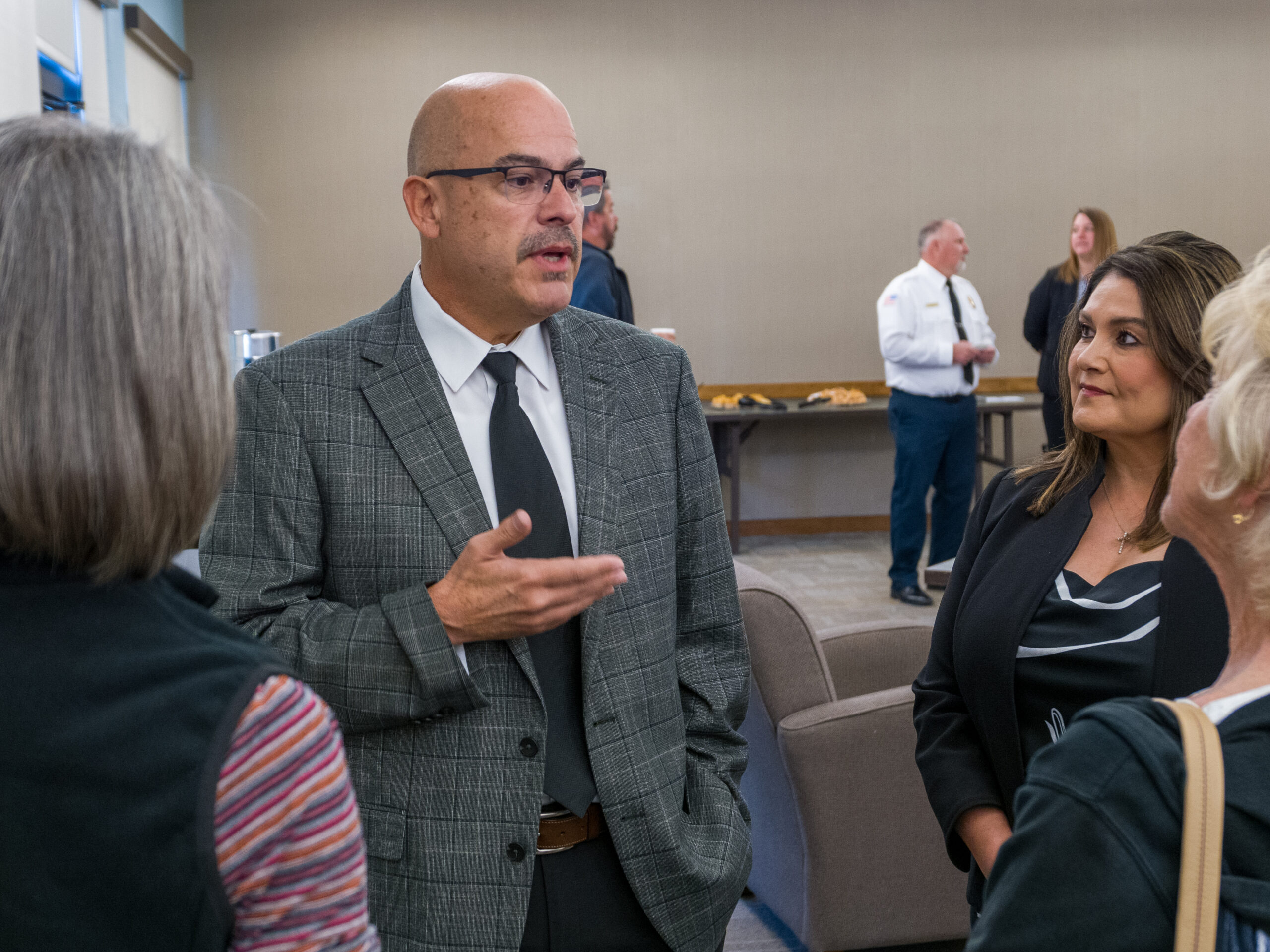“We will all know somebody, whether it’s your patient, whether it’s a friend or family member, who will have breast cancer,” Brenda Keith, area manager for Genentech, said during Northern Arizona Healthcare’s breast cancer seminar at the Residence Inn of Sedona on Tuesday, Oct. 24. “So, a reminder to get your screening mammogram.”
According to the Centers for Disease Control and Prevention, breast cancer is the second most frequent cause of cancer death for women in the United States, with 240,000 diagnoses annually. October is National Breast Cancer Awareness Month.
The CD recommends “that women who are 50 to 74 years old and are at average risk for breast cancer get a mammogram every two years. Women who are 40 to 49 years old should talk to their doctor or other health care provider about when to start and how often to get a mammogram. Women should weigh the benefits and risks of screening tests when deciding whether to begin getting mammograms before age 50.”

Warning signs of breast cancer can include pain in any area of the breast or a new lump in that area on in the armpit; changes in the shape and size of a breast; any discharge other than breast milk; pain in the nipple area; or a nipple pulling in.
The seminar had 24 attendees in Sedona with another dozen participating at the Flagstaff Medical Center. Deborah Lindquist, MD discussed medical oncology, David Beyer, MD discussed radiation oncology, Kate Preston, MD discussed breast surgery and Adam Boettcher, MD discussed plastic surgery options for breast cancer survivors following a mastectomy.
The seminar focused on treatment and recovery options.
“I think what’s important is when you’re choosing your doctor, you want to make sure that they have a team or at least they collaborate with the other oncologists so that [there’s no questions about] your plan … and from start to finish, everyone’s communicating,” Preston said.
“Cancer treatments have changed — to the point where women with certain types of breast cancers need less treatment than they might have anticipated,” the Yale School of Medicine stated on its website. “While some form of surgery — either a mastectomy or lumpectomy — will usually still be necessary, chemotherapy, a range of drugs that can eradicate cancer cells but cause harsh side effects, might be minimized or not used at all for some patients. In fact, some patients may ultimately do better on other therapies.”
There is a trend to try “to get away from chemotherapy,” Lindquist said.
Nonetheless, “most patients will eventually see the inside of a radiation oncology center. There is a role for radiation in a lot of cancers,” Beyer said. “About two thirds of all cancer patients will get radiation somewhere during the course of their journey.“
Beyer stressed the importance of emotional support from friends and loved ones and recommended the website rtanswers.org to those interested in learning more about radiation therapy.
“I tell every patient to go there,” Beyer said. “The other nice thing about it is patients can look at this at home, with their spouse, with their friends, they can have the kids in another state take a look at this. Everybody can be a part of that patient’s support team because they know exactly what they’re going through when they go through radiation.”



